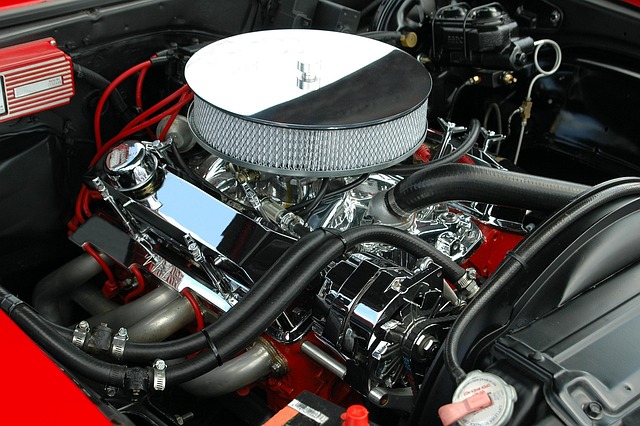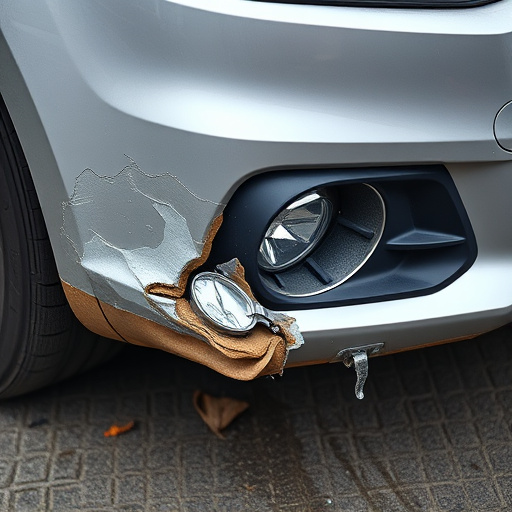Sustainable collision centers represent a major paradigm shift in the automotive industry towards eco-friendly practices, aiming to minimize environmental impact while offering high-quality repairs. Key principles include reducing waste, optimizing energy use, and adopting green technologies like efficient lighting, recycled materials, and electric vehicles. By adhering to international guidelines set by organizations like the UN, these centers contribute to enhanced environmental conservation, improved quality, and safety through innovative methods like robotic technology and water-based paints. Implementing eco-friendly practices requires strategic steps such as operational assessment, use of green cleaning agents, energy-efficient equipment, streamlined waste management, and partnership with local eco-conscious suppliers, setting industry examples while positively impacting both financial performance and the environment.
In today’s eco-conscious world, the automotive industry is undergoing a sustainable metamorphosis. “Sustainable Collision Center Standards That Meet Global Guidelines” explores the evolution of collision centers towards greener practices. We’ll define what constitutes a sustainable collision center and how global guidelines are reshaping industry standards. This article provides a step-by-step guide for implementing eco-friendly practices, ensuring these facilities minimize their environmental impact while maximizing efficiency.
- Defining Sustainable Collision Centers: Understanding the Core Principles
- Global Guidelines and Their Impact on Industry Standards
- Implementing Eco-Friendly Practices: A Step-by-Step Guide for Collision Centers
Defining Sustainable Collision Centers: Understanding the Core Principles

Sustainable collision centers represent a paradigm shift in the automotive industry, focusing on eco-friendly practices and responsible resource management. These facilities are designed to minimize environmental impact while delivering high-quality services like car dent repair and auto frame repair. The core principles revolve around reducing waste, optimizing energy use, and adopting green technologies. For instance, implementing efficient lighting systems, utilizing recycled materials for parts replacement, and promoting the use of electric vehicles for transportation within the center.
By embracing these sustainable practices, collision repair shops not only contribute to a greener planet but also enhance their operational efficiency. The global guidelines for sustainable development emphasize responsible manufacturing and waste reduction, which are key aspects in the operation of any collision center. This approach ensures that services offered, such as collision repair, are carried out with minimal environmental damage, fostering a more harmonious relationship between businesses and the ecosystem.
Global Guidelines and Their Impact on Industry Standards

The global automotive industry has witnessed a significant shift towards sustainability, driving the need for sustainable collision center standards that meet international guidelines. Organizations like the United Nations and regional bodies have set forth comprehensive frameworks to promote eco-friendly practices, ensuring the industry’s responsible development. These guidelines focus on various aspects, including waste management, energy efficiency, and the use of environmentally friendly materials. For instance, they advocate for advanced dent removal techniques that minimize metal scraping, thereby reducing scrap material generation.
The impact of these global standards is profound, as they not only enhance environmental conservation but also influence industry-wide quality and safety measures. Collision centers adopting sustainable practices in dent removal, vehicle restoration, and car paint services often employ innovative methods, such as robotic technology for precise repairs and water-based paints that reduce volatile organic compounds (VOCs). Such advancements contribute to the overall efficiency of sustainable collision centers, positioning them at the forefront of a greener automotive future.
Implementing Eco-Friendly Practices: A Step-by-Step Guide for Collision Centers

Implementing Eco-Friendly Practices: A Step-by-Step Guide for Collision Centers
In the realm of sustainable collision centers, embracing eco-friendly practices is no longer an option but a necessity. Collision centers can significantly reduce their environmental impact by adopting specific strategies that minimize waste, conserve resources, and promote recycling. The journey towards sustainability starts with a comprehensive plan. First, assess current operations to identify areas for improvement in vehicle body repair and auto detailing processes. Replace traditional cleaning agents with green alternatives and invest in energy-efficient equipment to lower carbon emissions from auto bodywork activities.
Next, streamline waste management by implementing recycling programs for materials like metal scraps, plastics, and used fluids. Encourage the use of biodegradable or recycled products in auto detailing, such as eco-friendly cleaning supplies and sustainable packaging. Additionally, consider partnering with local suppliers who share these green values to source eco-conscious materials for vehicle body repair. By following these steps, collision centers can not only meet global guidelines but also set an example for the industry in adopting sustainable practices that benefit both the environment and their bottom line.
Sustainable collision centers are not just a trend, but an essential evolution in the automotive industry. By adopting global guidelines and implementing eco-friendly practices, these centers can significantly reduce their environmental impact while meeting stringent standards. This article has explored defining principles, outlined key guidelines, and provided a step-by-step guide to help collision centers make this transformation. Embracing sustainability in collision center operations is not only beneficial for the environment but also fosters a positive image among customers who increasingly prioritize eco-conscious choices.














